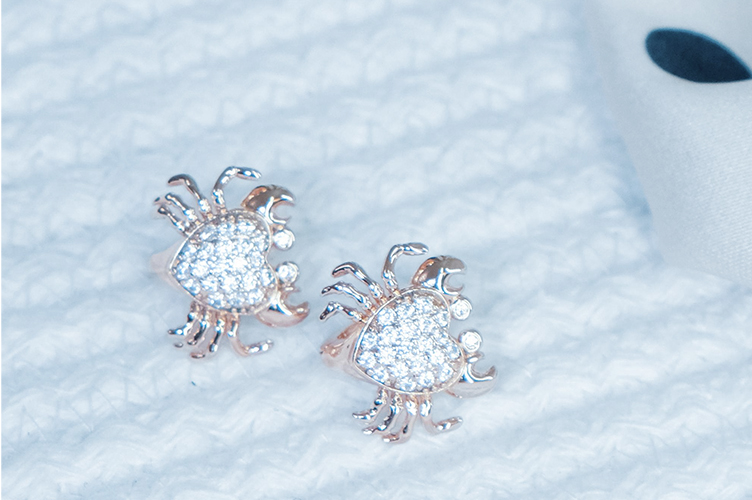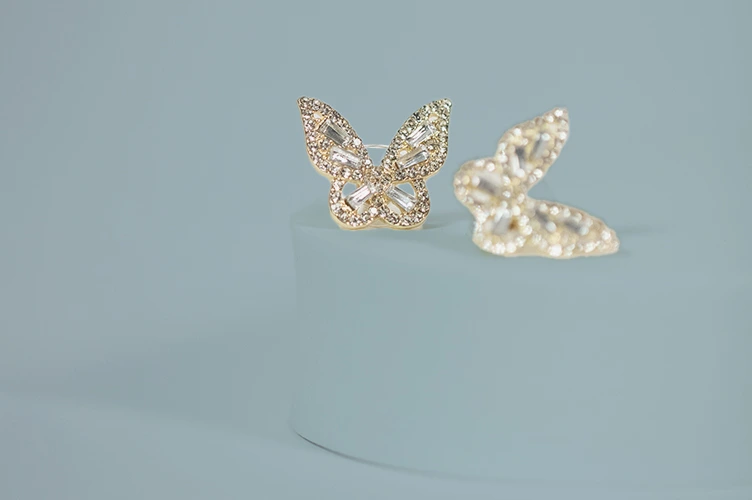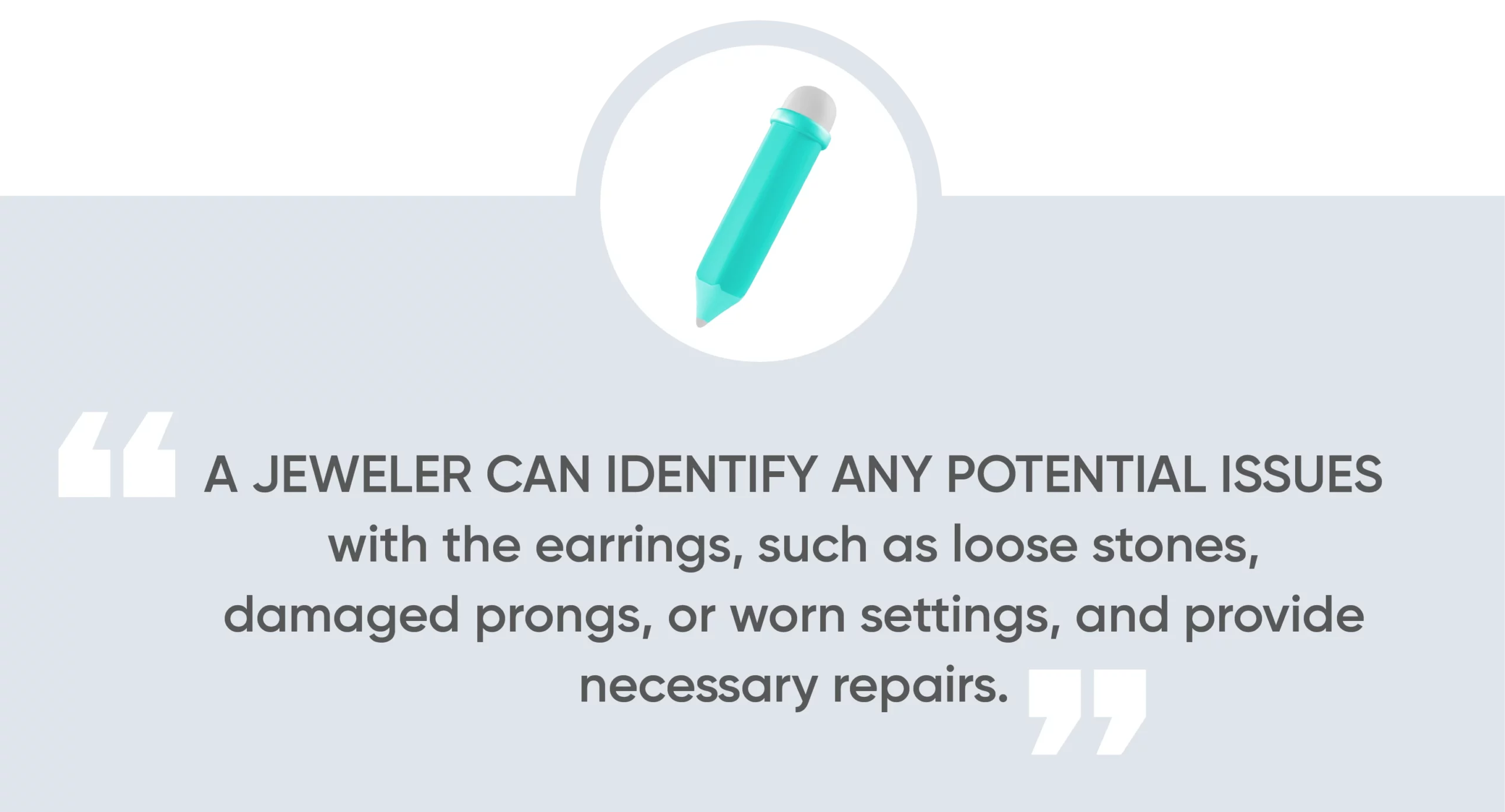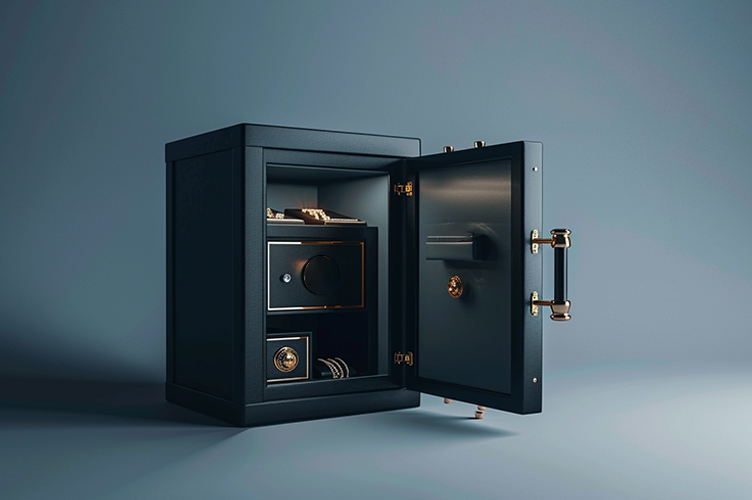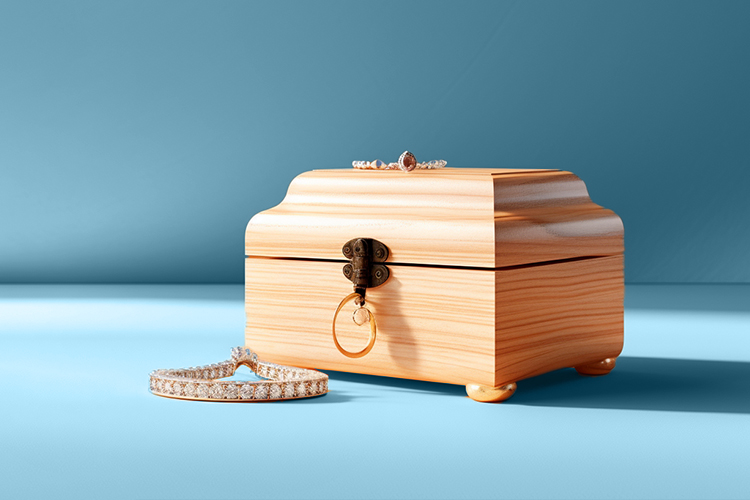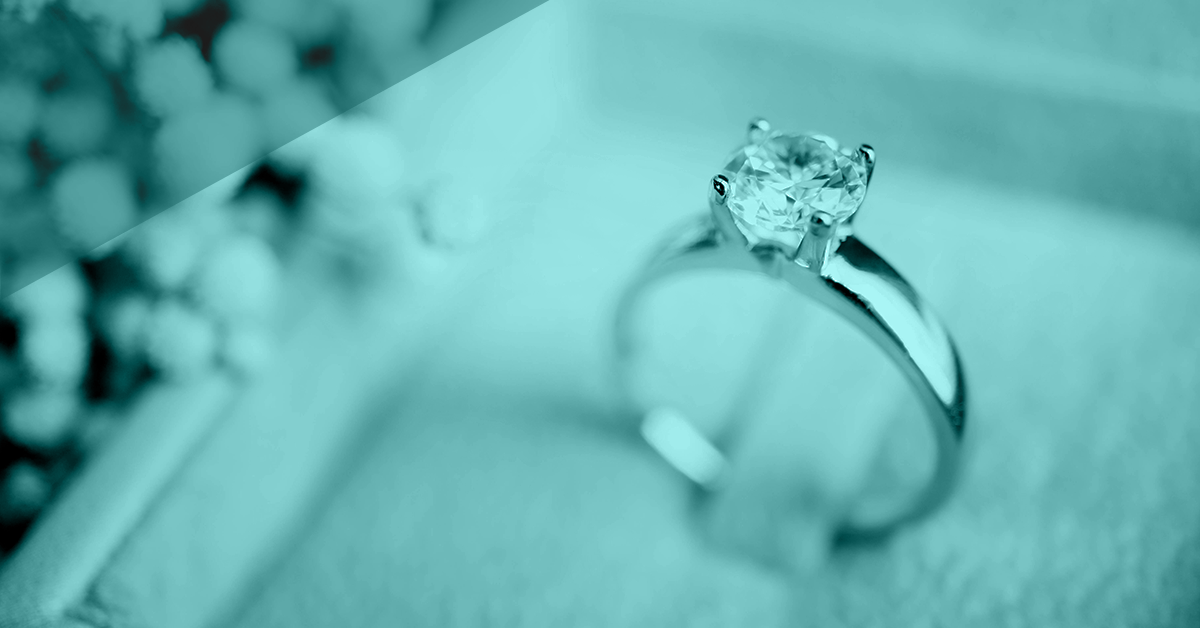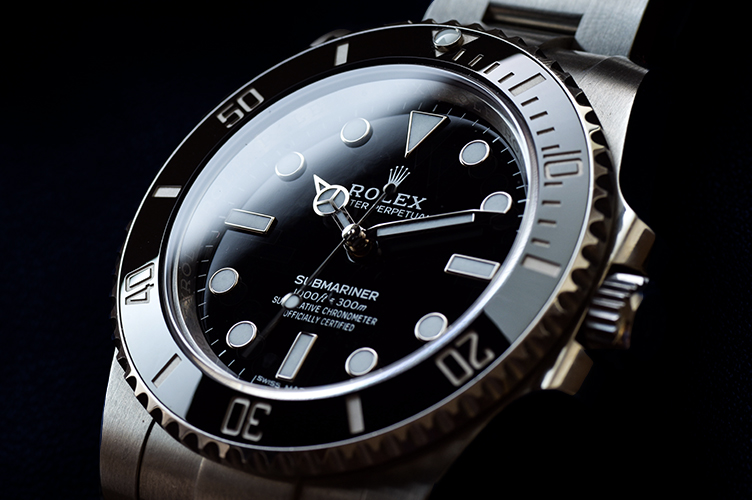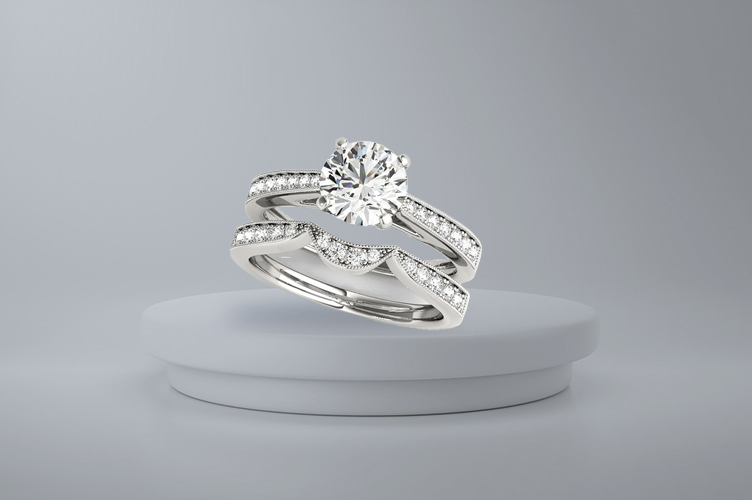Whether you have dazzling diamond stud earrings or elegant diamond-encrusted gold hoops, proper cleaning and care are essential to maintain their brilliance and beauty. But, you don’t need to rush to a professional jeweler every time your diamond earrings need a cleaning – with some simple and effective techniques, you can easily maintain your diamond earrings at home.
Diamonds are precious, and your diamond earrings deserve the same level of care as any fine jewelry in your collection, whether it’s a diamond engagement ring, a necklace, or other diamond-studded pieces. Discover how to clean diamond earrings effectively using readily available items and simple techniques.
What You Will Learn
- How to Clean Diamond Earrings: Preparing Your Workspace
- How to Clean Diamond Earrings at Home: The Gentle Dish Soap Method
- How to Clean Diamond Earrings at Home: A Jewelry Cleaning Kit
- How to Clean Diamond Earrings at Home: Ultrasonic Jewelry Cleaners
- When to Have Your Diamond Earrings Professionally Cleaned
- Protect Your Diamond Earrings with Insurance From BriteCo
- FAQs:
How to Clean Diamond Earrings: Preparing Your Workspace
Diamonds rate a 10 on the Mohs Hardness Scale, making them one of the hardest substances on Earth. Still, the settings and precious metals often used in diamond jewelry can be delicate. Proper preparation can make cleaning seamless, safeguarding your prized earrings against mishaps.
- Choose the right location:
Find a stable, flat surface away from any open windows or active areas in your home. This precaution helps minimizes the chances of your diamond earrings getting knocked over or misplaced.
- Safety first:
If working near a sink, ensure the drain is securely closed. It’s easy for tiny items to slip from our grasp. Consider placing a bowl or basin on your work surface instead of working directly over a sink.
- Gather your materials:
Before beginning, collect everything you’ll need: soft, lint-free cloths, a soft-bristled brush, mild liquid detergent or liquid soap, and a bowl of warm water for soaking. Having everything close at hand makes the process efficient and reduces the risk of leaving your jewelry unattended.
- Lay down a soft cloth:
A soft microfiber cloth protects your workspace and provides a gentle surface for your diamond jewelry. It catches any drips, keeps your earrings from rolling, and ensures they don’t get scratched against a hard surface or lost.
- Good lighting is key:
Good lighting will help you spot any dirt or grime clinging to your earrings’ intricate settings. This process ensures thorough cleaning and a brilliant result. Try placing a table lamp with a bendable or height-adjustable neck close to your workspace for task lighting.
- Minimize distraction:
When cleaning diamond earrings, minimize interruptions—keeping curious pets and children in another room and dedicating uninterrupted time to your task.
- Have a secure storage spot ready:
Once your earrings are sparkling clean, you’ll want to ensure they’re stored safely in a felt-lined jewelry box or a soft pouch.
Diamond earrings can lose sparkle over time due to dirt, skin oils, and everyday wear. Properly cleaning your diamond earrings can restore their brilliance and protect them from further damage.
How to Clean Diamond Earrings at Home: The Gentle Dish Soap Method
Diamond earrings can lose sparkle over time due to dirt, skin oils, and everyday wear. Properly cleaning your diamond earrings can restore their brilliance and protect them from further damage.
Materials You’ll Need
- Mild liquid detergent (free from any harsh chemicals or moisturizers)
- A bowl of warm water
- A soft-bristled brush (a soft toothbrush or a designated jewelry brush will do)
- A lint-free cloth or microfiber cloth for drying

Add a few drops of mild liquid detergent to the bowl of warm water. Stir gently without splashing until the soap is well-distributed, and bubbles form on top of the water.
The Soaking Process
Place your diamond earrings into the solution, ensuring they’re fully submerged. Let the earrings soak for 20-30 minutes. The soak will allow the solution to penetrate any built-up grime, making removing it easier.
The exception to the soaking rule is if the earrings also feature gemstones like emeralds, opals, or pearls. These gemstones cannot be submerged in water as the protective oils, adhesives, or nacre can deteriorate and damage the stone.
Gentle Cleaning
After soaking, take each earring and gently scrub it with the soft-bristled brush. Pay special attention to the backings, prongs, and settings where dirt accumulates. However, always be gentle to avoid damaging the metal or dislodging the diamonds.
Rinsing
Once gently removing any residue, rinse the earrings with clean, lukewarm water. As soap residues can leave a film on diamonds, diminishing their sparkle, ensure all soap is gone.
Drying and Buffing
Pat your diamond earrings dry with a lint-free cloth, ensuring no moisture remains. If you want to add an extra shine, gently buff them using a microfiber cloth. The buffing will enhance the diamond’s natural brilliance.
You can also use a specialized polishing cloth infused with anti-tarnish agents. These are ideal for sterling silver or white gold diamond earrings and are more prone to tarnishing than yellow gold.
How to Clean Diamond Earrings at Home: A Jewelry Cleaning Kit
If you need to clean your diamond earrings thoroughly, consider investing in a jewelry cleaning kit. These kits are as easy to use as the dish soap cleaning method but have additional features to lift stubborn grime.
- Specialized ingredients:
Unlike generic cleaning methods, a jewelry cleaning kit is tailor-made for diamonds and the metals they’re often set in. These kits usually contain ammonia-free, non-abrasive cleaning solutions that tackle stubborn residues without harming the jewelry.
- Comprehensive cleaning tools:
A typical jewelry cleaning kit also contains specialized tools like jewelry brushes and lint-free polishing cloths to help access hard-to-reach places and restore your earrings’ original shine.
- Consistent results:
You can expect consistency when using a jewelry cleaning kit. When you clean your diamond earrings, they’ll look as radiant as the previous cleaning session.
- Safety and security:
These kits contain safe chemicals with your diamond jewelry in mind. You can rest easy knowing that the solutions won’t corrode precious metals or loosen diamond settings.
- Portability:
Traveling and want to ensure your diamond studs retain their sparkle? Many jewelry cleaning kits are compact, making them easy to tuck into luggage. Your diamonds can shine whether you’re at home or on the go.
How to Clean Diamond Earrings at Home: Ultrasonic Jewelry Cleaners
Ultrasonic jewelry cleaners clean diamond jewelry using high-frequency sound waves. These sound waves create microscopic bubbles in the cleaning solution, which, when they collapse, produce a scrubbing action, effectively cleaning the intricate parts of jewelry.
Pros:
- Ultrasonic cleaners can reach crevices and areas that might be challenging to clean with manual methods.
- These devices can clean your diamond jewelry in a matter of minutes.
- Achieve a thorough clean every time, ensuring your diamond earrings remain dazzling.
Cons:
- Ultrasonic cleaners might not be suitable for jewelry with loose stones, fractures, or pieces combined with delicate gemstones other than diamonds.
- The vibrations can loosen settings over time. Inspect your earrings regularly if you use this method often.
- Even in an ultrasonic cleaner, use a mild cleaning solution to prevent potential damage to metals or stones.
If you wear diamond earrings frequently, ultrasonic cleaners can benefit your regular maintenance regime. However, they should not be the sole method of cleaning. For best results, consider using the ultrasonic cleaner as a part of a broader cleaning regimen. A combination of manual cleaning and ultrasonic cleaning can yield exceptional results.
When to Have Your Diamond Earrings Professionally Cleaned
While cleaning jewelry at home can help with the day-to-day maintenance of your diamond earrings, professional cleaning ensures a more profound and thorough cleaning process. Professional jewelers have the knowledge, experience, and specialized tools to clean diamond earrings safely and effectively.
Aim to take your diamond earrings to a jeweler twice yearly or before an important social event where you plan to wear them.
You can also benefit from inspections and repairs when you take your earrings for a professional cleaning. A jeweler can identify any potential issues with the earrings, such as loose stones, damaged prongs, or worn settings, and provide necessary repairs. These inspections can prevent you from accidentally losing your diamond.
BriteCo specializes in jewelry insurance. Our policies offer comprehensive coverage that general policies might overlook, including accidental damage, theft, loss, and mysterious disappearance.
Protect Your Diamond Earrings with Insurance From BriteCo
Diamonds, with their exquisite sparkle and timeless allure, aren’t just jewelry pieces; they represent moments, memories, and even milestones. BriteCo understands the intrinsic and sentimental value of these radiant gems. So when it comes to safeguarding your cherished diamond earrings, BriteCo’s insurance is not just a choice—it’s a commitment to peace of mind.
BriteCo specializes in jewelry insurance. Our policies offer comprehensive coverage that general policies might overlook, including accidental damage, theft, loss, and mysterious disappearance.
BriteCo’s seamless integration with professional appraisals means your diamond earrings are insured for their true and updated market value, ensuring you get the right coverage without any guesswork.
Our claim process is quick and straightforward in the unfortunate event of a loss. We prioritize restoring or replacing your precious diamond earrings, allowing you to work with your original jeweler.
With BriteCo, it’s not just about the financial worth of your diamond earrings. We understand the stories they hold, the emotions they evoke, and the history they represent. Use our convenient online tool to get a quote, or contact us for more information.
FAQs:
How to clean gold diamond earrings?
The dish soap method works well for gold earrings. But ensure you never use an abrasive scrub brush or sponges as they can scratch and dull the finish on the gold. Also, do not use chlorine bleach, ammonia, or other harsh chemicals, as they can weaken the metal and loosen the settings.
How to clean my diamond earrings if they’re antique?
Antique pieces require extra care and caution. They often have damaged or degraded settings that are more likely to break or lose stones. They may also feature traditional jewelry-making techniques like filigree or milgrain, which are delicate and highly elaborate, making them challenging to clean manually. Often, it’s best to have them professionally cleaned.
Can I use liquid soap?
Yes, a mild liquid dish detergent is ideal for cleaning almost any jewelry, from diamond rings to earrings. Avoid anything with added moisturizers, colors, or harsh chemicals.
What should I avoid when cleaning my diamond earrings at home?
Avoid chlorine, bleach, acetone, and other harsh chemicals. They can damage both diamonds and precious metals. Also, avoid excessive scrubbing, especially with abrasive materials.
How do I dry my diamond earrings after cleaning to avoid water spots?
Use a soft, lint-free cloth to pat them dry gently. Let them air dry on a flat surface in a room with good air circulation. Avoid using paper towels as they can scratch the metal.
Also Check:
How To Polish Jewelry | BriteCo Jewelry Insurance
How to Clean Ruby and Sapphire?
French cut diamonds are durable but can still chip
Best Lab-Grown Diamond Earrings | BriteCo Jewelry Insurance

